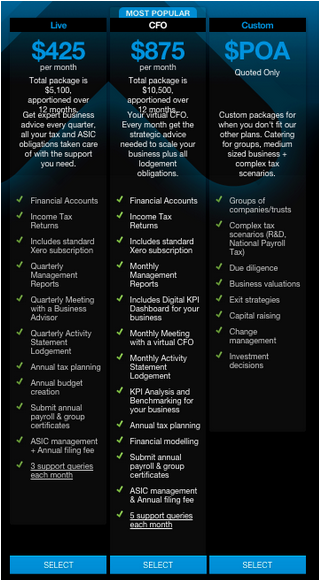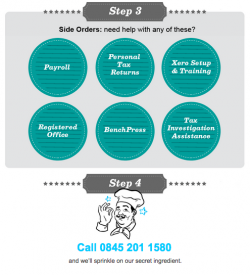Changing your business ideology when you chose to move to using cloud software means a change in your structure, internal processes and often a subsequent change in your pricing as well. With the added efficiency, productivity and instantaneous access to data that cloud technology provides, you can now be more proactive for your clients and provide them with deeper insights. In turn, increasing the value you are providing your clients and their businesses.
We live in a world driven by value and your pricing is ultimately a big reflection of that and what you do as a business. Your pricing also has a direct correlation on your profit and is the quickest and biggest influencer on maximising it. A study published in a 1992 Harvard Business Review by Marn and Rosiello, on the unit economics of 2,463 companies, they found that a 1% improvement in price optimisation resulted in an average boost of 11.1% in profits. This also compares to 1% improvements in variable cost, volume, and fixed cost only resulting in profit increases of 7.8%, 3.3%, and 2.3% (respectively). The study highlights that optimising pricing and basing it on value had the highest impact on increased profit.
A market leader is Australian based Interactive Accounting, who adopted a value based pricing model and also added in a wider service range, making the base level a more sophisticated product. They also utilise a number of cloud products across their plans such as Receipt Bank, Spotlight Reporting and Zendesk to add value and increase the practice’s productivity. They included management reports, dashboards and support tickets to help with anything that was a quick answer. The frequency of the management reports, dashboards and levels of support provided corresponded to the level of their plan.
The result was an increase in signups, revenue, and quality clients where the scope for growth and value add work was much larger.
So how exactly do you price your individual services and combine them into packages? We asked founder of Interactive Accounting and Practice Ignition, Guy Pearson on his tips for how Interactive Accounting developed their pricing strategy.
Getting Started
Break down your client’s basic compliance and reporting needs into three groups (small, medium and large), based on the level of service they require. With the automation of data flows now available with cloud products, you should focus on the frequency of strategic advice required for each group.
Building individual services
Look at each granular service that you can provide your client e.g. preparing monthly financials provide a breakdown for them, noting the following:
- The work that is required to be completed
- The products they require to do so (cloud software), if any
- Establish the experience level of the staff member they will need to complete that particular service
- Allocate times to each of the steps given the job/role
- Multiply the time by their hourly rate to determine the revenue required to cover the service and make a profit
- Add in the costs of the software being used (factoring in any rebates you may receive). Also remember that most software will be cheaper if you are spreading the costs over multiple clients, like Interactive Accounting encompasses reporting, dashboards and support tickets into their plans.
From this you should be able to determine the total baseline cost for this individual service and what exactly it includes.
Build packaged offerings
You can then move to bundle up services into packages, using the price for the services calculated above and creating packages (usually monthly, quarterly, annually or small, medium and large) following the steps below:
- Establish a baseline price for a packaged service by adding the sum of the total services created above.
- Discount for any efficiency gains to be achieved by standardising the baseline, using cloud software tools and by doing a larger piece of work for the client.
- Show an annual and also a monthly fee. The world is moving towards a subscription economy as consumers are now accustomed to consuming goods, services and memberships on a retainer basis with a set list of deliverables/entitlements.
A great illustration of this is The Wow Company who use the analogy of pizza ordering to demonstrate their value based pricing plans.
- Can you sell it at that price? Hard to market $3,214.76 p.a. Easy to market $3300 p.a.
You should now have a pricing matrix. This should include a list of services, what their baseline cost is and the baseline RRP in order to take to market. However, it’s always good to test pricing changes.
Sanity Check
Make sure when you run through the packages you’ve created it makes sense to a third party such as a client or a business mentor and ask yourself:
- Can you market it?
- Would you pay the same for an equivalent service (e.g. a lawyer)?
If the answer is no, then revisit your pricing matrix once more and tweak it until it makes sense to you.
Next steps - tracking your outcome
Now the hard part, delivering and measuring the change. Make sure you’ve got systems in place to track the success of the pricing. You should look at the current number of clients you sign up each month, their average value and then compare to each subsequent month. A good way to implement the change is at each of your client’s upcoming review, give them a taster of what the new packages will provide them (like a dashboard of their current performance and KPI’s). This gives you a visual representation to talk to them about their future plans, financial and non-financial KPI’s and what level of support you can provide to assist them (figuring out what package is best for them). In doing so you’re opening up your scope for growth and ability to provide more value add work to clients. By staggering it over the financial year when client’s are already coming in to see you means you won’t be overloaded with any additional work that arises from the change and also lets your staff adjust to the new processes and sort out any potential teething issues.
If the experience at Interactive Accounting is anything to go by, the package pricing mentality has been one of the keys to building a twenty person practice in under five years in multiple locations.
First appeared on the Practice Ignition Blog. Practice Ignition is online software to grow your accounting practice. Gain total control of your business and automate workflow with professional proposals and engagement letters, win more clients, get paid on time and stay productive.


